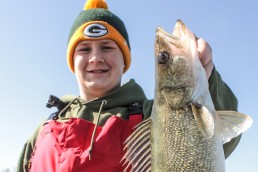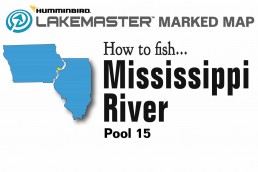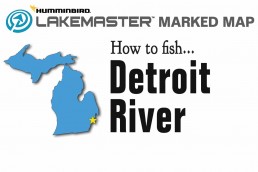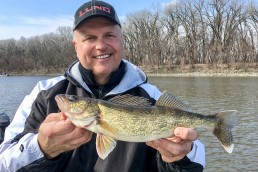Learning the River
SHARE THIS POST
I’ve talked to hundreds of people a year who have said that they’re too afraid to fish a river because they don’t understand how they work. I agree, rivers can be a pretty unforgiving place if you don’t know how to fish one. They can change in many different ways and can cause issues if you are not aware of the changes that happen daily on a river. This article is how I break down and simplify the parts that everybody needs to know about a river. Understanding the mechanics of how a river works will save you money and also put you in the right place to catch fish.
The first thing that you need to know about a river is the current. Current is the most noticeable part of a river’s features. Have you ever noticed that when you drive past a river it seems to have changed from when the last time you saw it? Current is the aspect of a river that can cause the tremendous amount of change you see. As the water moves downstream, it stirs up and moves dirt, sand, and even rocks.
A few years ago, my dad and I were on the river in a small slack-water pocket and we were catching fish like mad. The very next day we tried to go back to the same spot. The current had moved sand into the slack water and filled in the hole. Rivers can change very quickly. You need to be aware of these sudden changes.
The ever-changing river
Current is what causes the change in the direction a river takes. Over a period of time, the current in a river will erode more of the shoreline where the current is stronger. When you see a left turn on a river, the current will be the strongest on the right side of the water. That is where the main channel will be. The same applies when you see a right turn. When the river is straight, the main channel will flow down the middle. An interesting thing about how the current flows in a river is that on the surface, along the sides and on the bottom of a river, the current is slower because of the friction that is caused by the air and the river bed.
Navigating a river can be tough because of the constant changes that occur on a daily basis. One day the depth at your fishing spot can be ten feet and the next day it could be two feet. Knowing how to identify a change that you are unaware of can possibly save you some money. There are certain pieces of important visual information that can help you identify a potential boat hazard in the water.
Common river hazards
A very common thing to see on a river and probably the most shape-shifting structure in a river are sandbars. Sandbars are structures that form when sand is picked up by the current and gets deposited somewhere else downstream. These can form anywhere they want to. I have seen our boat dock with a sandbar ten yards away. The next day, it was gone. Sandbars don’t always show themselves. Often you will see one that is a few inches under the water. An easy way to tell is a difference in water color in certain areas. Slight rippling of the water can also indicate a shallow sandbar.
Are you enjoying this post?
You can be among the first to get the latest info on where to go, what to use and how to use it!
Rivers are full of different debris that comes in many different sizes and shapes. Two of the biggest enemies to a boater on the river are rocks and trees. Trees in the river will become soaked with water and can float around with ease. They often drift underneath the surface of the water or stick out of the water just a little bit. The way you can identify a tree that is at boat-harming level is if you see a singe v-shaped ripple on the water’s surface. This will happen even if the tree is a foot or two under the water, depending on the size of the tree.
Rocks can also do the same thing as a tree. They can be under the water or sticking out a little bit. One thing that rocks do is they can pile up and create a similar structure to a sandbar. It is almost like a dam. You can identify this if you see a line of ripples with a slight dip in the surface. Hitting a rock or tree at a high speed could possibly cost you a prop or even a lower unit, which is not a very fun thing to have happen. Make sure you watch the water carefully for any of these hazards.
Catching from cover
When you are out on the river fishing, you need to know where to find the fish and what cover to look for. There are a lot of different types of cover that can offer fish an easy resting place. The bonus for the fish and for you as an angler is these resting places also bring food to the fish. When fish are resting and waiting for food, they bite anything that comes into their strike zone. Fish that live in rivers will often relate to places that have the least amount of current. There are a few places that offer this kind of protection.
Larger rocks form eddies behind them. Rocks that are more streamlined offer better cover. The water flows around them more easily, resulting in less current. The result of the water flowing over the top of rocks are boils that form on the surface, which is an easy indicator that there is a slack-water pocket a little bit downstream. A common place that anglers take advantage of is slack-water pockets that are in or around sandbars, along the shoreline or behind a big rock pile. Slack water offers the best place for a fish because these pockets are often large enough for a fish to find an easy place to rest. Places that have slack water that are often overlooked by anglers are notches in the shoreline. These notches can be a point that sticks out into the water or a cut in the shore.
One of the easiest ways to learn how rivers work is to go study small streams. A stream is the same thing as a river, just smaller. If you understand the mechanics of a stream, you can easily apply that same knowledge to any river. Don’t be afraid of a river, just take the time to study and learn how they work. River fishing is a lot of fun and worth the education.
MWO
SHARE THIS POST
Did you enjoy this post?
You can be among the first to get the latest info on where to go, what to use and how to use it!



